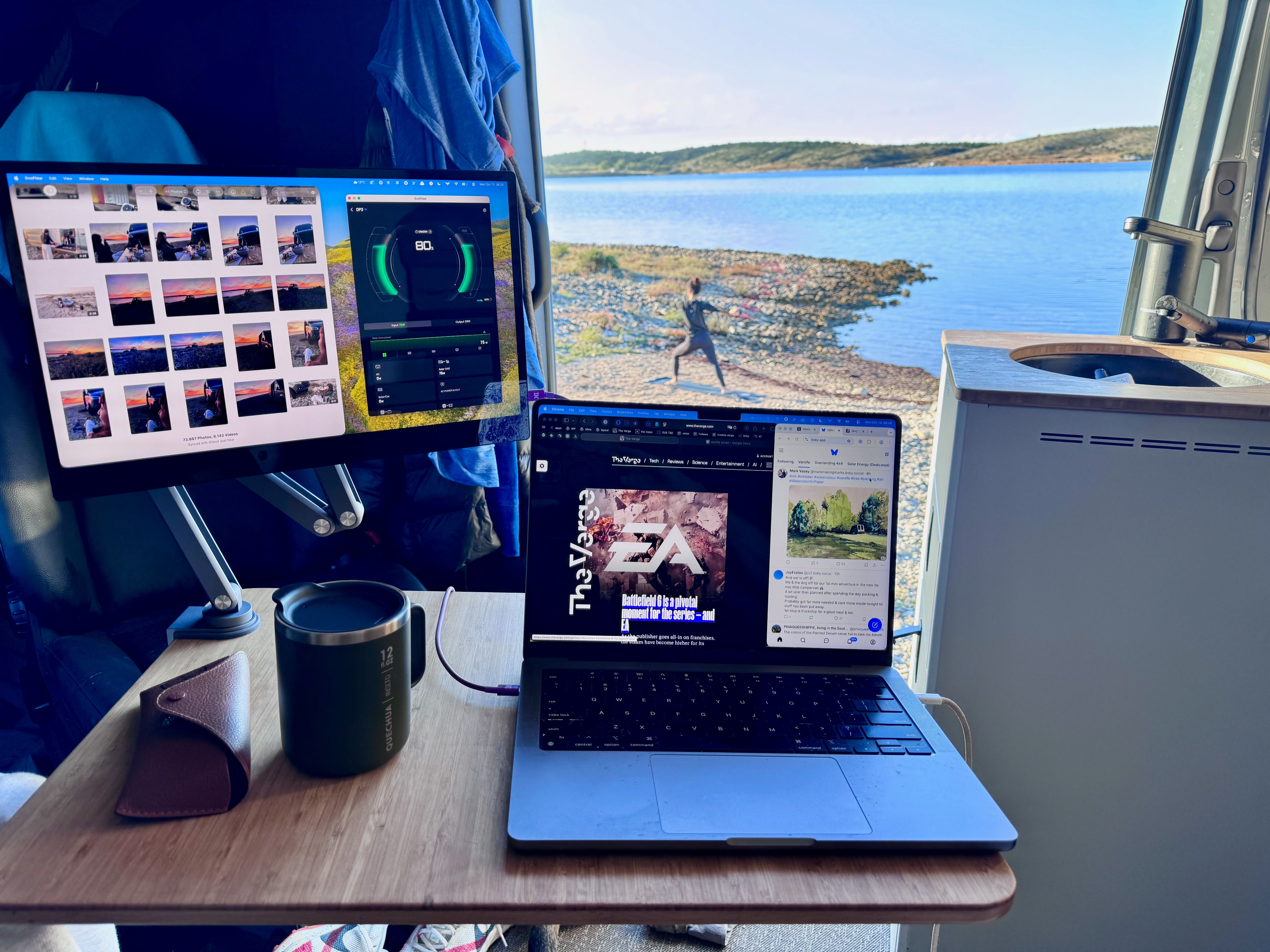Remote workers just got a game-changer. The Espresso Pro 15.6-inch portable monitor has landed with a 4K touchscreen that weighs just 800 grams yet delivers desktop-class productivity anywhere you can set up a laptop. At $699, it's expensive, but early testing shows it's transforming how digital nomads and van lifers tackle multi-screen workflows on the road.
The portable monitor space just got serious competition. Espresso's new Pro model isn't just another laptop accessory - it's a complete rethink of what mobile productivity looks like in 2024. The 15.6-inch display delivers 4K resolution (3840 x 2160) with 1.07 billion colors and 100% Adobe RGB coverage, all wrapped in an aluminum body that measures just 9mm thick and weighs 800 grams. That's lighter than most gaming laptops and thinner than a magazine. The specs tell one story, but real-world testing reveals something more interesting. Thomas Ricker from The Verge spent three weeks using the Espresso Pro in his van-based mobile office, and the results are compelling. "Having a second screen that I can set up literally anywhere is a game-changer," he writes, noting how it transformed both his and his wife's remote work setup. The technical implementation is surprisingly elegant. A single USB-C cable handles both power and data transmission, drawing just 13 watts at maximum 550-nit brightness. That's enough to cut laptop battery life in half, but the monitor's dual USB-C ports support pass-through charging, so you can keep your laptop powered while extending your workspace. Apple users get seamless plug-and-play functionality with MacBooks, while the display also works with Windows laptops, iPhones, and Android devices. The included Stand+ mount deserves special mention. It's a magnetic mounting system that folds completely flat yet extends tall enough to position the monitor above an open laptop. The engineering here is impressive - the stand nearly justifies the premium pricing on its own, offering multiple viewing angles and surprising stability for such a compact design. But this isn't just about hardware specs. The Espresso Pro addresses a real pain point for the growing remote work economy. As more professionals adopt nomadic lifestyles, the gap between desktop productivity and laptop limitations becomes increasingly problematic. Dual 27-inch monitors at home spoil you, making the transition to a single 14-inch laptop screen feel cramped and limiting. The Espresso Pro bridges this gap with professional-grade color accuracy and 4K sharpness. Testing revealed some interesting limitations. The touchscreen functionality feels underutilized on macOS, functioning more as an accidental distraction than a productivity feature. iPhone integration works well for Netflix and YouTube but requires external power and lacks portrait mode support for social media content. The built-in speakers are adequate but not impressive, and some streaming apps refuse to work when connected to external displays. The $699 price point puts this squarely in iPad territory, which raises obvious questions. A 13-inch iPad Air costs $799 new (or $639 refurbished) and offers far more functionality as a standalone device. It can serve as a second monitor through Sidecar or third-party apps while also functioning as a tablet, drawing device, and media consumption platform. Yet there's something to be said for purpose-built tools. The Espresso Pro does one thing exceptionally well - it extends your laptop's display real estate without compromise. No notifications, no app switching, no battery anxiety about your secondary device. It's pure monitor functionality in an impossibly portable package. The competitive landscape is heating up. Traditional monitor manufacturers like and LG are pushing into portable displays, while continues refining Surface devices that blur the laptop-tablet line. But Espresso has carved out a specific niche - the premium end of portable monitors where build quality and display fidelity matter more than rock-bottom pricing. Market adoption appears strong among specific user groups. Van lifers, digital nomads, photographers who need color-accurate displays on location, and business travelers who refuse to compromise on productivity are driving early sales. The device has become something couples fight over each morning, according to Ricker's testing - a sure sign of product-market fit. The broader implications extend beyond individual productivity. As remote work becomes permanently embedded in corporate culture, tools that enable high-quality mobile offices become strategic investments. A $699 monitor that transforms any location into a dual-screen workspace could easily pay for itself in increased productivity and reduced office overhead costs.












